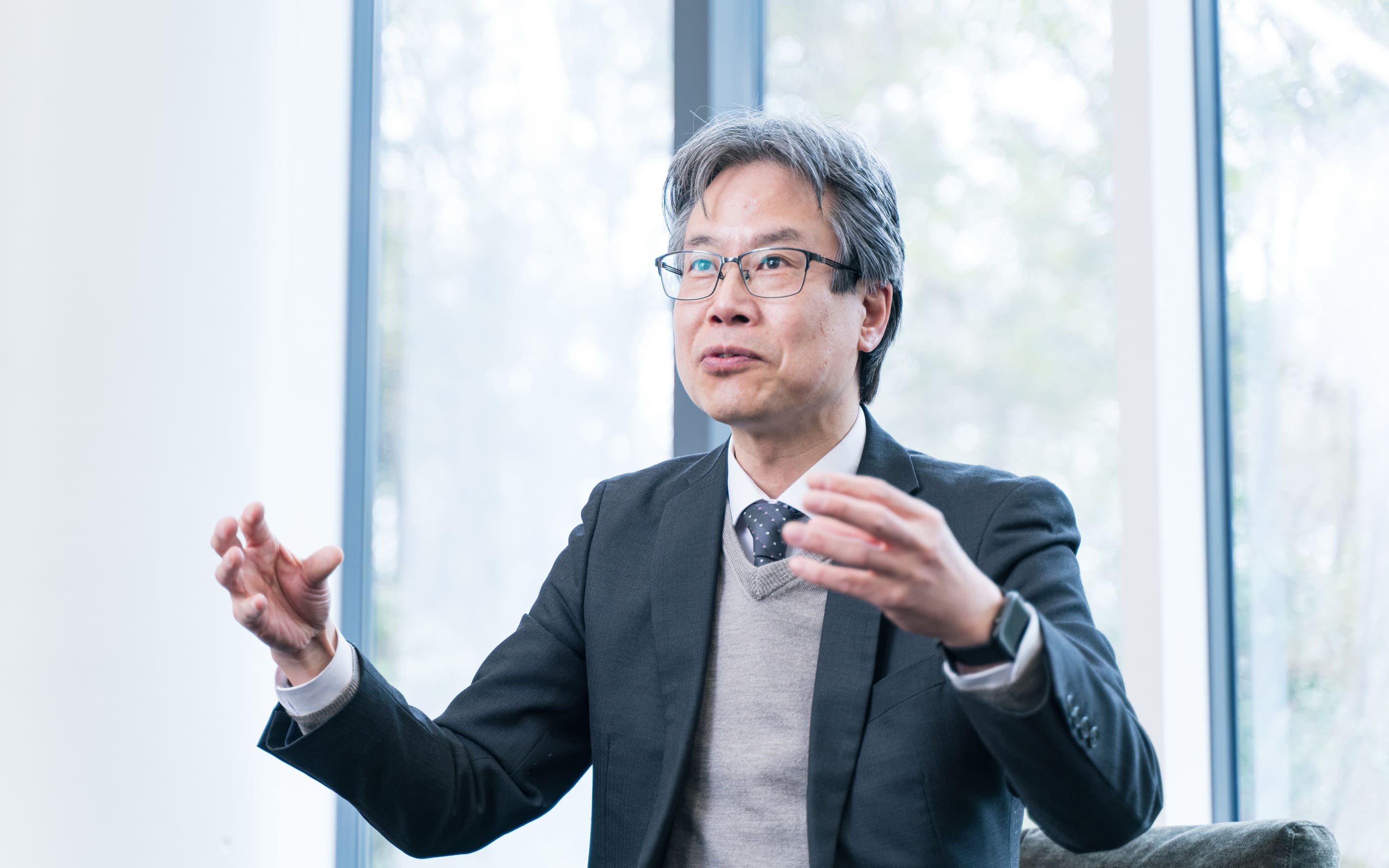After joining the company in 2011, he was assigned to the Environmental Technology Laboratory at the Shiga Plant where he worked on motor research as he had hoped. At first, he was placed in charge of large motors and worked on cost reduction development of motors for large air conditioners for four years before being assigned motors for room air conditioners in his fifth year.
He then moved to TIC where he developed motors for small room air conditioners and is currently overseeing motor development for compressors in general.
Hirano says, "At Daikin Industries, I get an opportunity to do what I enjoy." The issue of reducing the use of rare earths, not to mention motors, is now a major issue again, and it is exactly what I have been researching since my university days.
NEWS
Overcoming Pesky Motor Development Issues One by One
FEATURE
2022.10.25
Motors are essential to the operation of air conditioner compressors and fans. Masaki Hirano and Shojiro Naka are mid-career engineers in charge of developing high-efficiency DC reluctance motors at the Daikin Technology and Innovation Center (TIC) and have been with the company for about 10 years. Because motor-related issues, such as raw material problems and noise reduction, change with the times, we asked these engineers about their approach to motor development.
Choosing an employer for an opportunity to work with motors
Masaki Hirano has been researching motors since his university days. At the time, hybrid cars were attracting increasing attention, and in explaining why he is focused on motors, he says, "I thought that the need for motors would continue to grow, and if I were going to pursue this, I wanted a technology that would contribute to the environment. Although motors are familiar to us from trains and elevators, the impact of installing a motor in a private car is significant.”
Around the time Hirano was in university, Japan was confronting a rare earth shortage caused by a situation overseas. Although the price of rare earths had not yet risen to the today’s level, it was then when people began to talk about resource risks. Hirano asked his professor about the best place to work in the motor industry and was told that even though Daikin Industries mainly manufactures motors for its air conditioners, the company was conducting cutting-edge R&D for various types of motors. That sold Hirano on Daikin Industries.
Around the time Hirano was in university, Japan was confronting a rare earth shortage caused by a situation overseas. Although the price of rare earths had not yet risen to the today’s level, it was then when people began to talk about resource risks. Hirano asked his professor about the best place to work in the motor industry and was told that even though Daikin Industries mainly manufactures motors for its air conditioners, the company was conducting cutting-edge R&D for various types of motors. That sold Hirano on Daikin Industries.
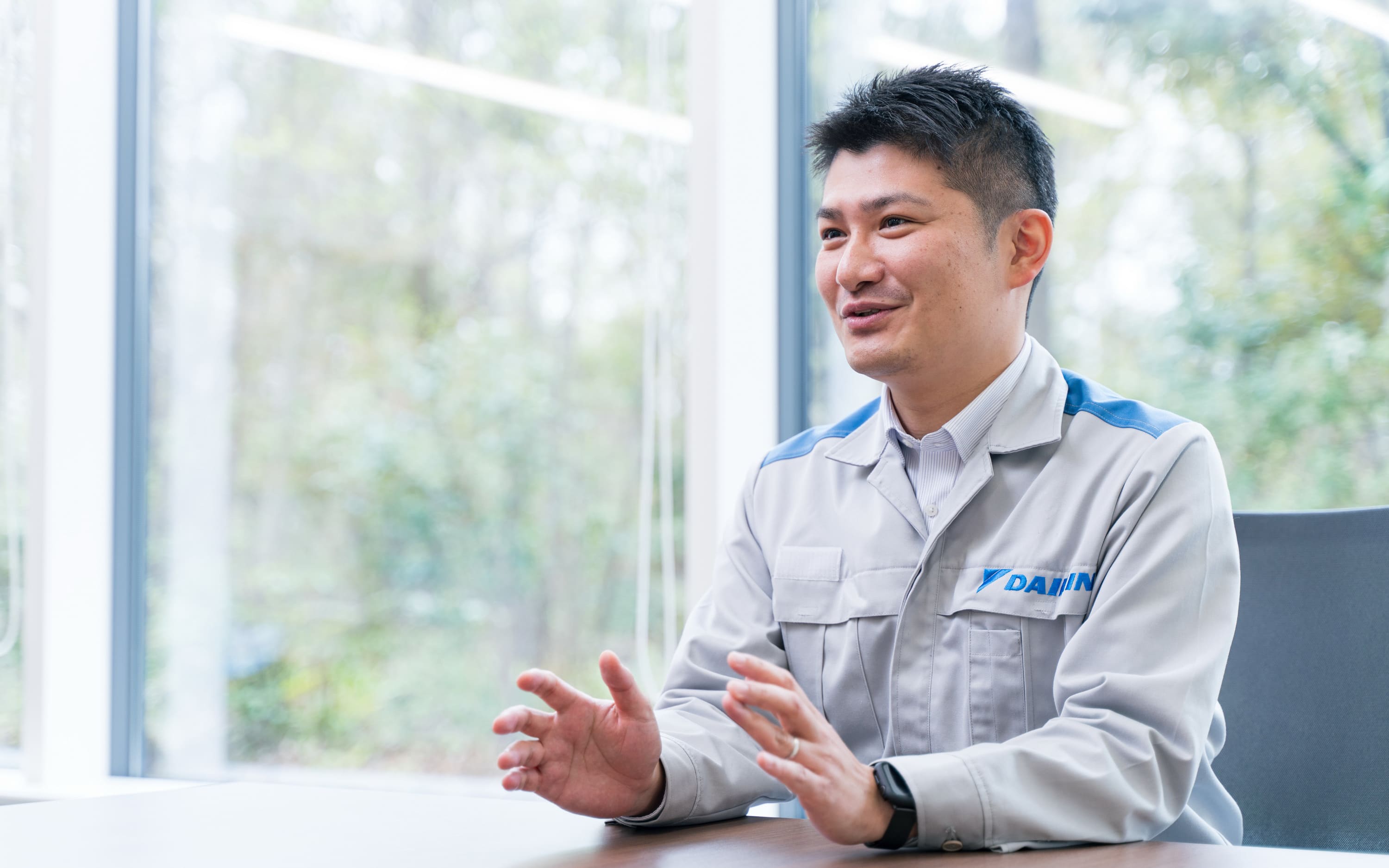
Motor development ranging from materials to electronic circuits
Shojiro Naka joined the company as a new graduate in 2012. He majored in control engineering at university where he studied DC/DC converters and other digital controls. His parents live in the Kansai region, and his desire to work in the Kansai region led him to Daikin Industries.
After joining the company, he was assigned to the Motor Group of the Air Conditioning Manufacturing Division where he was put in charge of cost reduction development and worked to replace the materials used in compressor motors for both commercial and residential use air conditioners. He further advanced to the development of low-vibration motors.
Naka was assigned to TIC soon after its establishment in 2015 where he continues to be involved in motor development and is in charge of R&D for air conditioning compressor motors. Motor development is not just about the motor itself but also greatly encompasses the inverter that it is combined with.
After joining the company, he was assigned to the Motor Group of the Air Conditioning Manufacturing Division where he was put in charge of cost reduction development and worked to replace the materials used in compressor motors for both commercial and residential use air conditioners. He further advanced to the development of low-vibration motors.
Naka was assigned to TIC soon after its establishment in 2015 where he continues to be involved in motor development and is in charge of R&D for air conditioning compressor motors. Motor development is not just about the motor itself but also greatly encompasses the inverter that it is combined with.
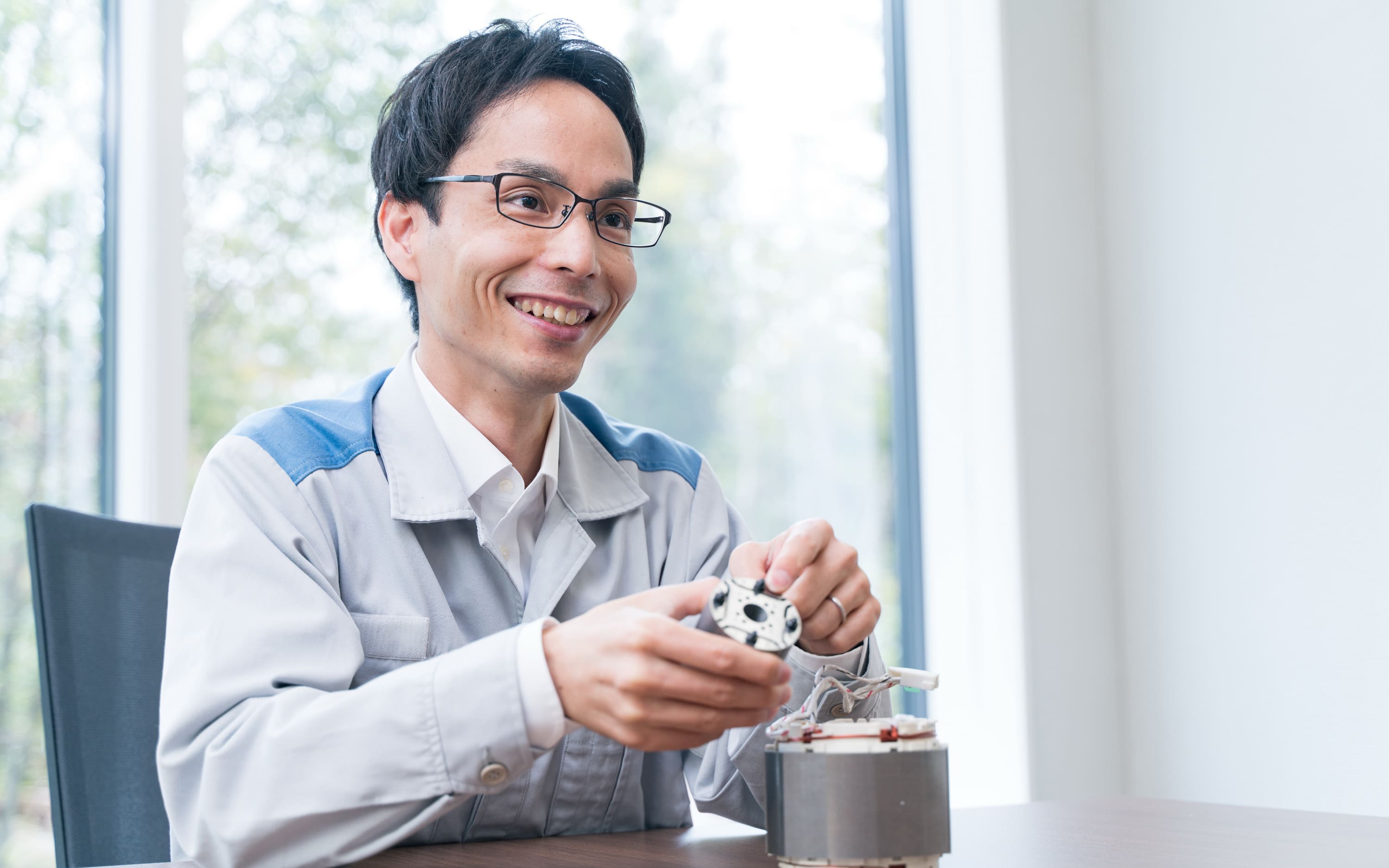
He observes, "In Asia and India, we are trying to manufacture and sell air conditioners at a much lower cost, so we are focusing on low-cost development. With the recent tightening of noise regulations in Europe and other countries, we need to develop low-vibration outdoor units to make them quieter."
To achieve a low-noise compressor, the motor, inverter, and compressor must work together to suppress vibration. “In the past, there were fewer opportunities for everyone to discuss the development of motors, inverters, and compressors, but recently we have been working more closely together," he says, noting the importance of horizontal ties and expressing satisfaction with the low barriers between teams at TIC and the environment of easy consultation.
To achieve a low-noise compressor, the motor, inverter, and compressor must work together to suppress vibration. “In the past, there were fewer opportunities for everyone to discuss the development of motors, inverters, and compressors, but recently we have been working more closely together," he says, noting the importance of horizontal ties and expressing satisfaction with the low barriers between teams at TIC and the environment of easy consultation.
Researching technologies that extend far beyond the next product
At TIC, the place where Hirano and Naka are engaged, research themes are set in line with Daikin Industries' management strategic plan "FUSION," and members work diligently for development as a team on a daily basis. The themes are not ones that will be accomplished immediately, but ones that require tenacious pursuit over a long period of time.
While the basic value of motors has not changed, and universal issues such as "efficiency, sound, vibration, and resource issues" underlie the basic development axis, development themes are determined in response to the changing times, changing products, and changing needs
Feedback, including needs and customer comments, actually come from the development team at the Shiga Plant, which is adjacent to the production site. For this reason, the development themes assigned to TIC are often not those that will be incorporated into the next product, but those that go even further beyond that.
While the basic value of motors has not changed, and universal issues such as "efficiency, sound, vibration, and resource issues" underlie the basic development axis, development themes are determined in response to the changing times, changing products, and changing needs
Feedback, including needs and customer comments, actually come from the development team at the Shiga Plant, which is adjacent to the production site. For this reason, the development themes assigned to TIC are often not those that will be incorporated into the next product, but those that go even further beyond that.
TIC environment eases responsibility of small motors produced in large volumes
When his responsibilities changed from the development of large motors, which he had performed since he first entered the company, to small motors, Hirano had faintly hoped that handling smaller motors would make experiments easier. However, once he actually took charge, he found his expectations shattered.
Room air conditioners are products equipped with small motors and are a volume zone product group with a sales volume that is an order of magnitude higher than that of large models. Because of the large number of products produced and the many product variations, even a single specification requires a great deal of time and effort to decide.
Room air conditioners are products equipped with small motors and are a volume zone product group with a sales volume that is an order of magnitude higher than that of large models. Because of the large number of products produced and the many product variations, even a single specification requires a great deal of time and effort to decide.
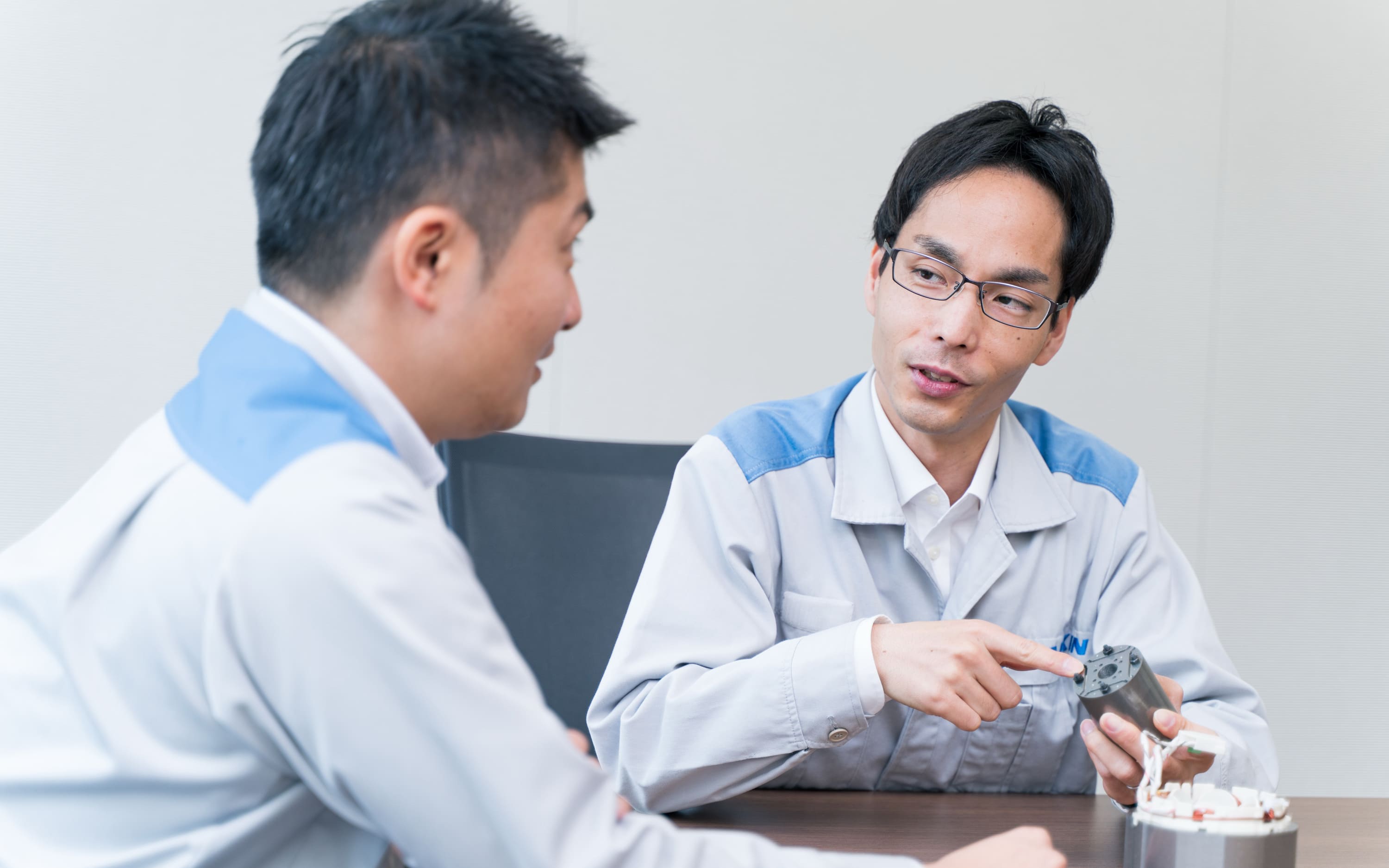
Moreover, the performance has evolved over the years as a result of the research conducted to date, making it difficult to raise performance even further.
Nevertheless, Naka believes that there is "still room for growth" in the low-vibration motors that he is researching. Until now, low-vibration motors have been realized through the magnetic force design of motors, which is one of Daikin Industries' strengths. In order to meet the need for even lower noise, further evolution of motors is necessary.
This is where the TIC advantage of easy collaboration among teams comes into play. Naka is a member of the motor development team, but he feels equally as comfortable discussing issues with members outside his team since TIC has an environment in which people can easily consult across groups.
Nevertheless, Naka believes that there is "still room for growth" in the low-vibration motors that he is researching. Until now, low-vibration motors have been realized through the magnetic force design of motors, which is one of Daikin Industries' strengths. In order to meet the need for even lower noise, further evolution of motors is necessary.
This is where the TIC advantage of easy collaboration among teams comes into play. Naka is a member of the motor development team, but he feels equally as comfortable discussing issues with members outside his team since TIC has an environment in which people can easily consult across groups.
Cooperation with other teams is the strength of TIC and Daikin Industries
Air conditioners require a compressor to cool the air, and a motor to drive the compressor is indispensable. Although development is carried out separately by each of the teams in charge, collaboration among the teams is an absolute prerequisite for an actual product to become a reality. This is where TIC's unique atmosphere has a positive effect.
When you have a problem, there is someone nearby who you can easily talk to and ask for help. Key personnel are also nearby. TIC also has a space where people can quickly gather and discuss issues.
Incidentally, this atmosphere is not limited to TIC; although TIC conducts R&D that is ahead of its time, the results of TIC cannot be applied to products unless it also collaborates with the development unit, which is closer to the product development site. Even now, the progress is shared at a moderate pace, once a month, and there is close communication about whether there are any problems and whether the development is meeting the needs.
Mr. Hirano describes the atmosphere at Daikin Industries and TIC as follows: "At TIC, if we have a problem, we can consult widely and proceed with development by opening up the issue not only within the company but also to the companies and universities with which we collaborate. And even if we fail at a challenge, we are not blamed for it, so we can keep trying. It is likely that motors will continue to evolve under the favorable atmosphere at TIC.
When you have a problem, there is someone nearby who you can easily talk to and ask for help. Key personnel are also nearby. TIC also has a space where people can quickly gather and discuss issues.
Incidentally, this atmosphere is not limited to TIC; although TIC conducts R&D that is ahead of its time, the results of TIC cannot be applied to products unless it also collaborates with the development unit, which is closer to the product development site. Even now, the progress is shared at a moderate pace, once a month, and there is close communication about whether there are any problems and whether the development is meeting the needs.
Mr. Hirano describes the atmosphere at Daikin Industries and TIC as follows: "At TIC, if we have a problem, we can consult widely and proceed with development by opening up the issue not only within the company but also to the companies and universities with which we collaborate. And even if we fail at a challenge, we are not blamed for it, so we can keep trying. It is likely that motors will continue to evolve under the favorable atmosphere at TIC.
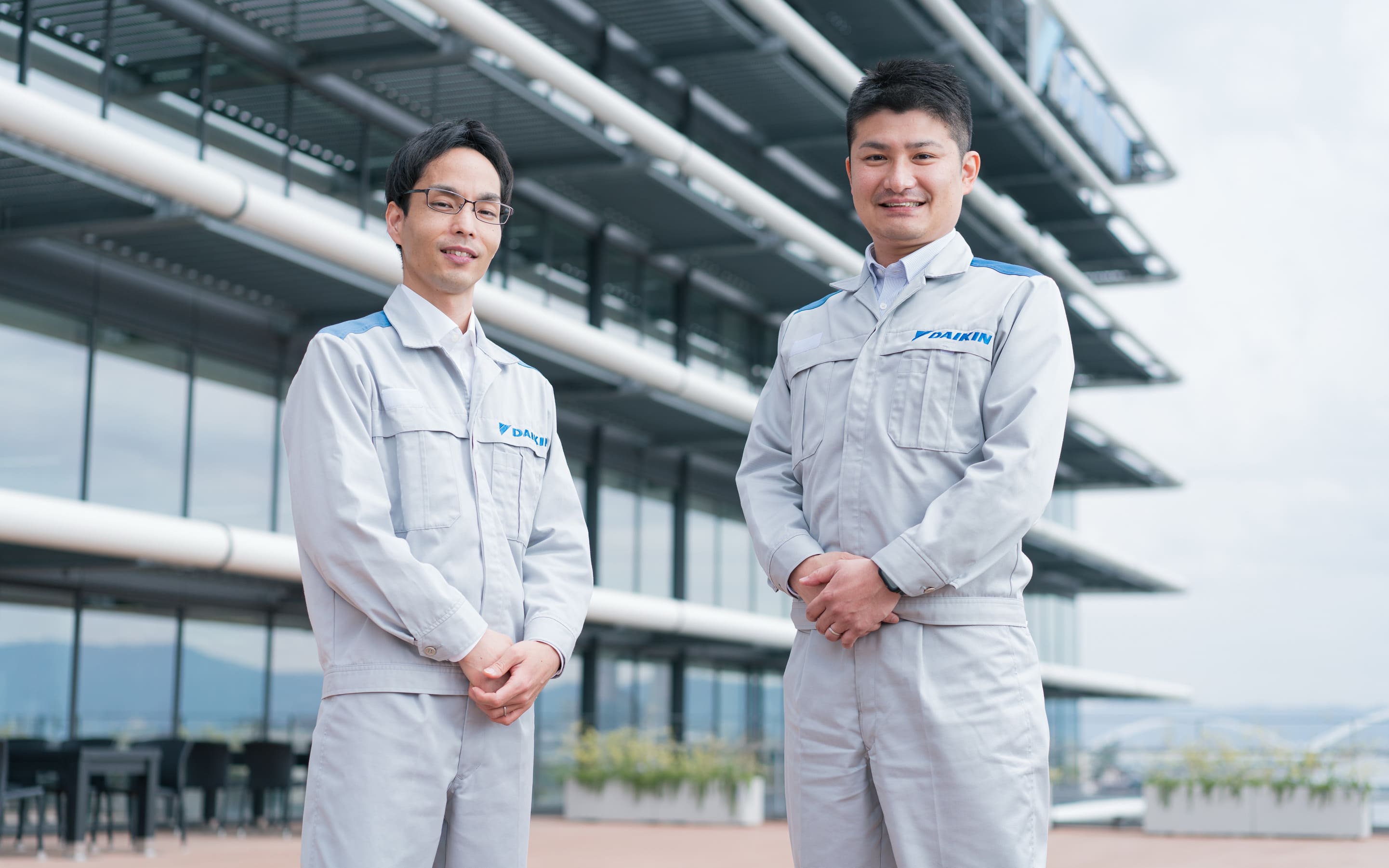
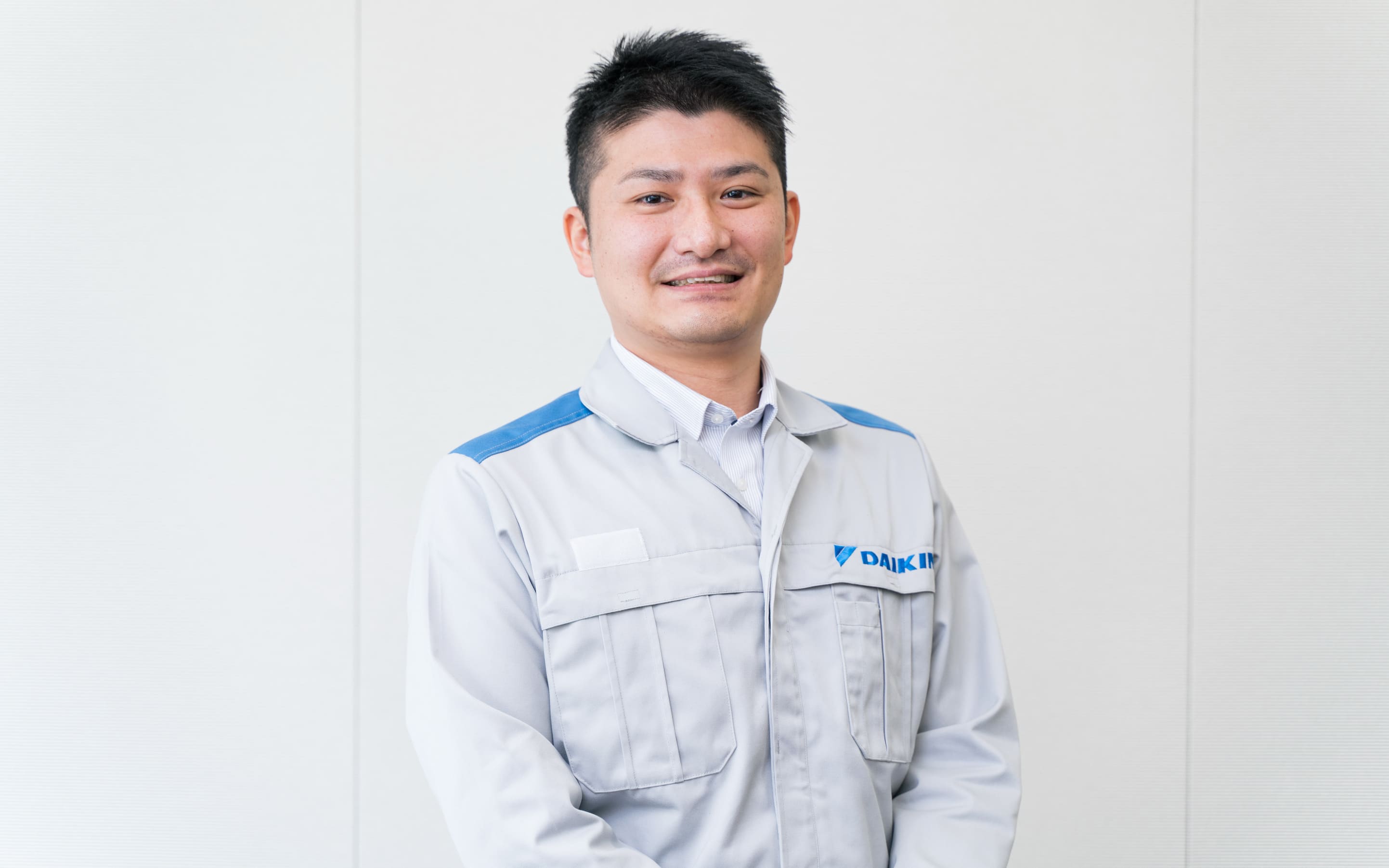
Masaki Hirano
Technology and Innovation Center
Joined the company in April 2011. Born in Aichi Prefecture. In charge of motor technology development. We want to deliver environmentally friendly motors to the world through Daikin air conditioners. We will continue to take on the challenge of developing new motor technologies that will surprise everyone.
Technology and Innovation Center
Joined the company in April 2011. Born in Aichi Prefecture. In charge of motor technology development. We want to deliver environmentally friendly motors to the world through Daikin air conditioners. We will continue to take on the challenge of developing new motor technologies that will surprise everyone.
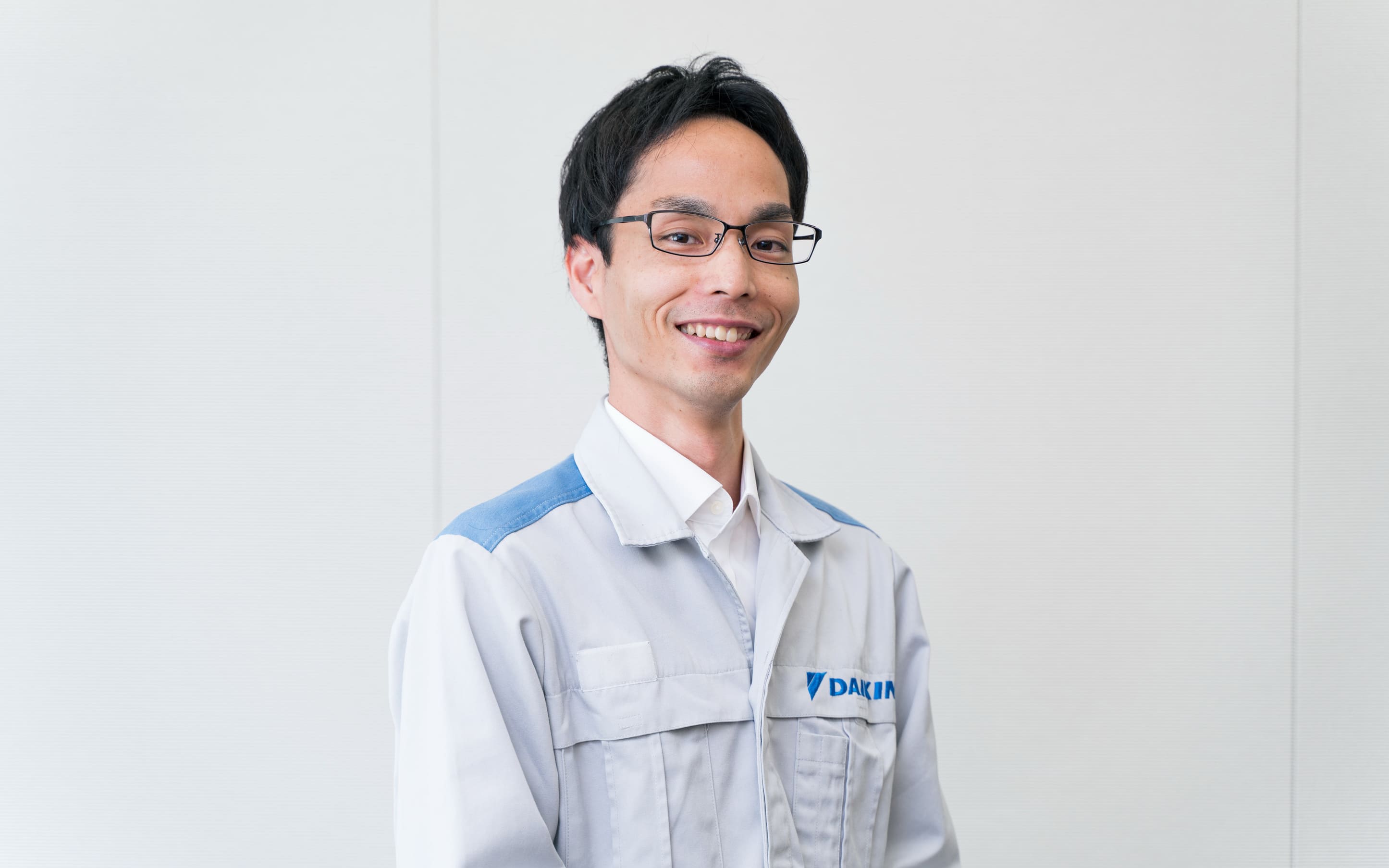
Shojiro Naka
Technology and Innovation Center
Joined the company in 2012. Born in Nara Prefecture. Responsible for technical development of motors. By collaborating not only within the company but also with external companies and universities, the company aims to develop the world's No. 1 low-vibration, high-efficiency motor.
Technology and Innovation Center
Joined the company in 2012. Born in Nara Prefecture. Responsible for technical development of motors. By collaborating not only within the company but also with external companies and universities, the company aims to develop the world's No. 1 low-vibration, high-efficiency motor.
Related article






